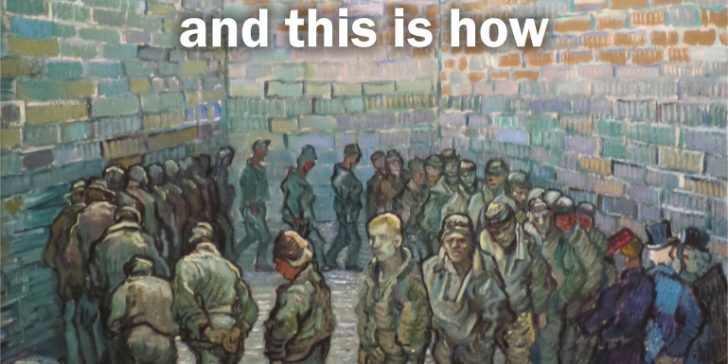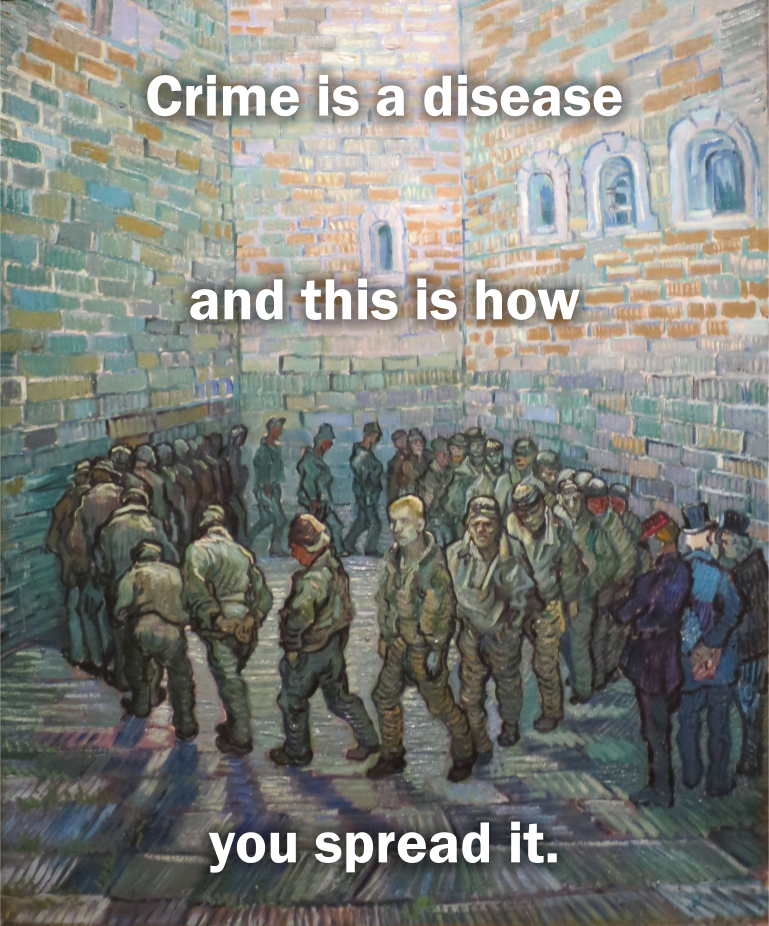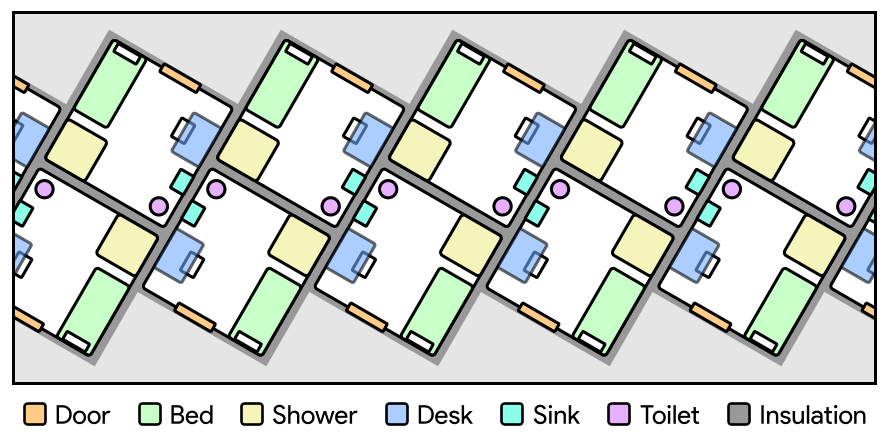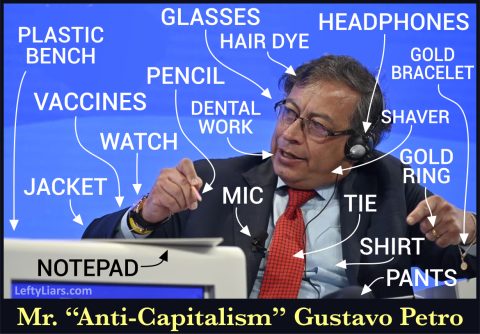

Throughout history, jails and prisons have been terrible places, which mostly kept bad guys locked away from the rest of us. There was little in the way of reform, and most were happy about that and still are. Who could blame them today, with so many soft judges letting criminals walk the streets as free men and women? They have every reason to want prisoners to suffer behind bars.
However, there is a way to adequately punish prisoners while still reforming them so that when they return, few will repeat their crimes. This is not another cliched plan but an original approach, and if it is tinkered with, it may fail.
The plan’s basic elements are as follows:
1. Quarantining Criminals
What does anyone think will happen when criminals are together in cells all day? Many will brag about their exploits, and others will ask detailed questions. Rapists will teach thieves about the finer details of how to rape, while thieves will teach racketeers how to shoplift, and extortionists will instruct child molesters on the art of blackmailing. It is the College of Crime. If you wish to learn how to steal, rob, rape, pillage, blackmail, kill, molest and kidnap, go to prison. Where is the best place to dispose of a body? What kind of clothes should you wear to shoplift? What are the best con artist routines? How do you open a locked car? Prisoners will give you great advice and details on all these activities, giving you step-by-step, face-to-face instructions. You will come out of prison much more of a criminal than when you entered, and you will have many new friends and connections to encourage you into committing crimes. To truly have a chance of reforming inmates, you need to keep them the hell away from other inmates.
2: Privatization & removal of red tape
Federal, State, and local governments are renowned for inefficiency and waste. Public servants do not spend their money but yours, which makes wastefulness easy. Also, thanks to unions, they are rarely fired, which removes their incentive to try hard. Government workers are often asked for favors by their co-workers, friends, and family; some become suppliers of stolen property or services care of the taxpayer. Easily bribed, they allow others to bend the rules, escape fees, avoid fines, or delete taxes in exchange for favors. The more power bureaucrats enjoy, the more corrupt they can sometimes become, spending their days playing games, chatting online, and boasting about the vacations they enjoy on full pay. Annoyingly many pat each other on the back for jobs poorly done, saying, “Great job!” Over time, they firmly believe they are heroes. It is a pathetic spectacle.
Privatizing prisons needs to take place wholly, not partially. When you only privatize one jail and smother it with government regulation, it will barely function better than a State-run facility. Remove the red and green tape and privatize all such institutions, and you will see a massive change for the better.
3: State legislated charter
Now for the part that trips up Lefties, who howl in pain when anyone mentions privatization. A State Charter would govern the essential function of private prisons. It would not strangle the business in red tape but would be a checklist of basics and a warning to those who might break the rules. This charter would apply to all prisons and jails in a State. Each State would have its own rules, either the same or with slight changes, but the decision to privatize should be up to each State.
4: Franchising
Each prison or jail would be a franchise, and the number purchased by one owner would depend on his success, calculated according to his prison’s recidivism rate. According to this Special Report (backup here) from the U.S. Department of Justice, 2018:
Five in 6 (83%) state prisoners released in 2005 across 30 states were arrested at least once during the 9 years following their release. The remaining 17% were not arrested after release during the 9-year follow-up period.
About 4 in 9 (44%) prisoners released in 2005 were arrested at least once during their first year after release 40 (figure 1). About 1 in 3 (34%) were arrested during their third year after release, and nearly 1 in 4 (24%) 30 were arrested during their ninth year.
Governments think this lousy recidivism rate is fine and dandy and congratulate themselves on a well-done job. As Donald Trump might say, it is a shithole rate. Consider that the report above cuts off at the nine-year mark, but more prisoners would be arrested in years 10 to 20, increasing the percentage. Also, many crimes go unsolved by government-run police, so the real recidivism rate would be higher again if the police did their job correctly. In short, government prisons suck. Probably close to 95% of prisoners re-offend, which is a dreadful failure, equal to a score of less than 1 mark out of 10!
Owners of private prisons could open another jail if they were in the top 20% of the lowest recidivism rate. Those owners in the losing 80% category would not be able to expand, providing all a strong incentive to work hard at improving their services. The charter would dictate that prisons with persistently poor records would have their licenses revoked and be put up for sale. The franchise McDonald’s has similar rules. If one of their restaurants suffers persistently poor sales and constant complaints, its franchisee will have his lease canceled or not renewed, and new franchisees will take over.
The top ten and five percent of prison owners would receive other incentives, including tax concessions, the ability to buy and expand further, and various other goodies. The total ownership of prisons nationally would be limited to about a hundred.
5: Intelligent jail cells
Prisons would operate very differently from those in the past and generate profits. Racist gangs, violence, hierarchies, shivs, illegal drugs, alcohol, cigarettes, and gambling would not exist inside. Prisoners would not communicate together unless they were working or studying under strict robot and human supervision. The building’s design and technology would make prohibited contact almost impossible, and inmates would have little incentive to try.

Solid steel soundproof cells would be staggered to prevent communication using sound or mirrors. Built-in, tamper-proof cameras, speakers, and microphones would be in the eight corners of each cell. The speakers would provide surround-sound background noise regulated by voice commands, with thousands of choices. Prison officials could also send messages through the same speakers, and phone calls could be made using the same, with conditions.
Background sounds (city, beach, forest, etc.) would help inmates remain rational. They would keep their sanity while being punished, which is what you want. It is the key to assisting them to change for the better. They would prefer to be home instead of stuck in a cell, but making them go crazy only disrupts society further once they are released. Since AI would generate sounds, they would never repeat themselves. All combinations of sounds would be original, as they are in real life.
Cameras would work 24 hours a day in light or dark, and computers would monitor vision, alerting humans if needed. No humans would watch as long as an inmate was not doing anything suspicious. The inmate would have one less thing to fret about, again reducing his mental torture. He would have a sense of privacy and an incentive to behave well.
Inmates’ food would be delivered to their door by robots only when the inmate was lying on his stomach on the bed, with his hands in front of a sensor plate on the wall. The cell’s cell-watching computers would monitor this. If the inmate tried to move toward the food entry port, it would instantly shut, and the inmate would miss his meal. The same would apply when removing or supplying dishware, laundry, and toilet paper. To reduce disease, all inmates must wash their hands before eating and after using the lavatory. Failure to comply would make the cell power down, so all lights, TV, and sounds would turn off.
A menu would be available, and inmates would place orders through voice commands. Saying “menu” would bring a response and a list of available foods. Inmates would not gather in a cafeteria to eat, in any courtyard to exercise, or in communal showers to wash.
6: Gym
Every hundred prisoners would require a gym catering for one prisoner at a time, between the hours of 6.00 am and 9.00 pm., seven days a week. Each prisoner would use the gym for 50 minutes weekly. A personal trainer would assist them as they went through a variety of exercises, and these would be carefully recorded and adjusted to the inmates’ ability and condition. There would be a ten-minute gap between inmates for sterilizing equipment. Guards would escort cuffed prisoners to and from the gym, making sure none met on the way. The few hours left over would be used for proper cleaning and maintenance of equipment. During their time in the gym, inmates’ cells would be cleaned by cleaning bots.
7: Entertainment
Television would be available, but no phones, computers, or games. Inmates could buy phone calls from their smart jail cells if they had money in their jail cash accounts (voice calls, not video). A computer would monitor and record their conversations, and some numbers and subjects would not be allowed. They would be limited to two or three calls daily unless there were important reasons to allow more.
8: Work, training, and profits
Any business must make profits, and a private prison is no exception. To accomplish this without leaning on taxpayers, inmates must do far more. First, any money they have will need to be used to help fund their stay in jail. For that to happen, laws would be changed. Bills would be passed, allowing private prisons to charge inmates for their accommodation. Money would be taken from their bank accounts or seized possessions legally. If Fat Tony robbed a bank and went to jail, his house, car, and furniture would be sold to pay prison expenses. Whatever remained on his bill would need to be paid off through work arranged by the prison. Produce from crime would also be included if rightful owners remained unknown.
Prisoners’ records and behavior would determine their grouping. Some would be put into chain gangs to work on various projects paid for by private enterprises. The chain would only connect three inmates simultaneously rather than larger groups. Since food and board are provided, their wages would be below minimum wage, and 75% would be taken for any bills they owed. The rest would go into their accounts. The prison would keep profits from the actual job in question.
In the meantime, inmates could learn a trade. Each week, they would be provided half a day to learn auto mechanics, plumbing, carpentry, building, bricklaying, roofing, painting, plastering, electrical work, or landscaping. After some years, those performing well could receive a valid license.
If his sentence was not over, a prisoner could qualify to teach the same trade to other inmates and earn a wage. His salary would be small, and he would pay much for unpaid bills, saving the prison money. Inmates taking teaching positions would also impress a parole board, possibly leading to an earlier release.
Training programs teaching inmates how to improve their lives and manage their money would also be available. If an inmate attended these sessions and did well, he would be paid a higher wage when working for the chain gang. Inmates would also learn the value of manners, honesty, and a good reputation.
At the end of his term, before his release, an inmate would attend ‘leaving’ classes that examined his plans and means. What would he do, and how would he pay for it? Other class members would add their opinions and advice. The prison would use any connections with previous inmates, now in business, to improve his chances. He would be provided with names of people to contact for possible jobs and help reconnect with society.
9: Why a decent prison is not a ‘hotel’
This idea for prison reform will have its critics saying, “Prison is meant to punish prisoners, not be a desirable hotel,” but their description would only be half right.
Yes, prison is meant to punish, but my system is by no means desired. Which hotel forces you to work in a chain gang or to stay in a tiny cell all day and night for years? Show me a hotel that will not let you use the Internet and restricts private phone calls. Nobody wants to be in jail, even when the prison can reform. Which would you prefer: prisons that treat inmates so poorly that they come out worse than when they went in or prisons that transform a large percentage of criminals into honest citizens?
10: No misbehavior copied or taught
Most prisons are breeding grounds for violence, racism, and crime. Oddly enough, documentaries about jail life often feature this terrible behavior as though the authorities are proud of it. Many government wardens and guards think it is okay that racist gangs decide how things will be inside. Black inmates tell journalists why they hate whites and Latinos and how they will beat them up if they cross their boundaries. Whites gnash their teeth about the other groups, threatening to shiv them immediately. Guards stand around nodding in agreement, giving the arrangement their blessing. When questioned, they shrug and say, “It is what it is,” with Einstein-like focus.
In traditional prisons, inmates gather in many areas, from shared cells, exercise yards, canteen meals, and group showers. Gangsters teach newbies the ropes. Some inmates end up raped, others are beaten, and some are forced to provide money to avoid a similar fate.
There would be no such grooming in the prison system proposed here since none of the prisoners would meet unless they were working or in class, under strict supervision at all times. Anyone trying to groom anyone else would be banned for months, instantly.
11: Neck collars
During education or work, among other prisoners, each inmate would wear a neck collar that would listen to, watch, and communicate with the inmate. The collar would be tamper-proof and unblockable. Any racist or grooming behavior would be forbidden. Computers would always surveil through the collars, alerting humans when necessary.
Drugs would not exist in prison. Any guard found guilty of smuggling them in would be fired immediately and face criminal charges. Any visitor found trying to sneak illegal goods into the prison would be banned from visiting for five years and charged with criminal offenses.
12: Lie Detectors
All prisoners applying for parole or early release would be subject to lie detector tests, which would play a role in board decisions. For those who say lie detectors are not a hundred percent accurate, I point out that neither are the humans on the parole board in judging the inmates’ honesty. Some humans are wildly incorrect, yet they remain on the board. A lie detector is a tool that provides data to be judged by those humans. It does not make final decisions; they do. Finally, lie detectors do not live in 1965 – they are a continually-improving technology. By the time private prisons like the ones I describe exist, lie detectors will be twice as good as they are now, and eventually, their success rate will be 100%. If you refuse to use them, then you may as well not use humans either.
13: Recidivism rate
The recidivism rate would be low for most private prisons of this kind, certainly compared to government prisons, which are about as high as they can be. As such, crime would drop markedly, and society would benefit significantly. Prices of goods and services would decrease since shop owners would no longer need to mark up prices to cover theft. Insurance would cost less, life expectancy would rise, and prison populations would shrink, as would the number of prisons required. The impact of this would be extraordinary.
Summary of main points:
- Privatization and franchising of prisons
- A legislated charter with simple guidelines
- Expansion only allowed for those with low recidivism rates
- Payment for costs by inmates through assets and labor
- Quarantine of prisoners – keeping them separate most of the time
- Smart soundproof cells with microphones, cameras, and speakers in every corner
- Smart collars with the same
- 24-hour monitoring by AI computers in jail cells and collars
- Robot delivery of food, laundry, books, minimizing contact with human guards
- Gym time alone, once a week, with a trainer
- Background noise to counter effects of cells’ soundproofing
- Work gangs to make money for prison
- Training to license new trades for prisoners
- Use of lie detectors by parole boards
- Effective counseling before release to make re-entry into society a success
So, which political leader dares to start the ball rolling in their State? Once you do, all other States will see the dramatic effect and eventually copy you. Pretty soon, society will look back to the days of old when prisons were the way they are now and blush with embarrassment. “How primitive we used to be!” they will lament.
You know I am correct in my assessment, so what is stopping you? Why remain rooted in medieval times when you could be a shining star in history, changing things for the better?
A felon sentenced to fifty years in today’s prisons wastes a life and drains taxpayers, swallowing up millions of dollars. In my system, that same person would be paying his way and being reformed, able to leave prison in 20 years and live productively. For those who were never released, at least they would still contribute to society through their work.





